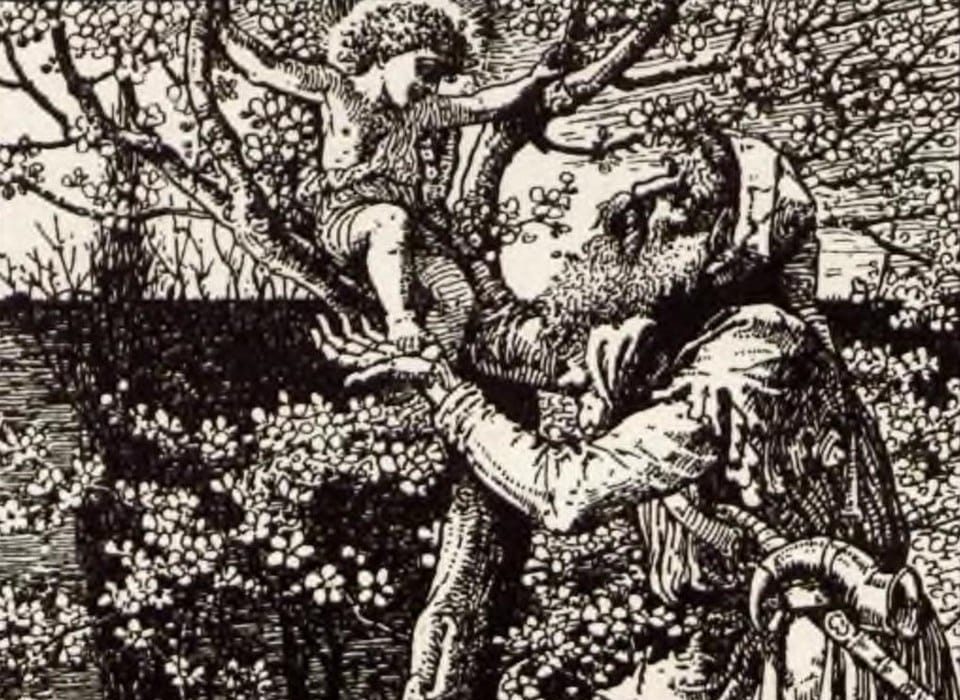“Robin thought on Our Lady deere,
and soone leapt up againe,
And thus he came with an awkwarde stroke;
Good Sir Guy hee has slayne.”
— “Robin Hood and Guy of Gisborne”
Robin Hood goes on many adventure in the early ballads of the medieval period. Typically, he sets out with a companion and they run into trouble. Afterward, Robin invites the person to join his troupe, and off they go into the wild. But, the ballad “Robin Hood and Guy of Gisborne” is a little different. And it is definitely one of the most bloody. In it, Robin Hood confronts a most dastardly villain who is out for his head!
Background
The ballad is a part of the Percy collection of Robin Hood tales, and features Guy of Gisborne, who is a notorious villain of Robin Hood’s, along with the Sheriff of Nottingham. It is an older ballad, surviving in a single seventeenth century copy, with a similar play dating back to 1475; and, it is “the only one of the six Robin Hood ballads in the manuscript that Percy printed in his Reliques of 1765″ (Knight). It is oft cited as it is quite popular.
Summary
Quarreling with Little John
The ballad begins with Robin Hood waking and feeling out of sorts–a dark wind is on the horizon. Robin Hood leaves his companions behind as to not disturb them, venturing only with Little John. Yet, after scouting the forest, he encounters a man dressed in horse hide who also has the head of a horse as his hood. As it turns out, he is a bounty hunter (mercenary) by the name of Guy of Gisborne, sent to captures Robin Hood.
As the ballad tells us, “There were the ware of wight yeoman, / His body leaned to a tree. / A sword and a dagger he wore by his side, / Had beene many a mans bane, / And he was cladd in his capull-hyde, / Topp, and tayle, and mayne.”
Little John and Robin Hood agree to go their separate ways. “But often words they breeden bale, / That parted Robin and Iohn; / Iohn is gone to Barnsdale, / The gates he knowes eche one,” states the ballad.
Guy of Gisborne
Afterward, Robin runs into Guy of Gisborne out in the woods. The two men converse but quickly come to know one another as enemies. Then, they begin a contest of archery and swordsmanship. Nonetheless, their skills are matched, and they are at a standstill. The only thing left to do is fight to the death.
They begin to duel, and though it is an arduous fight, Robin eventually defeats Guy of Gisborne. Robin then uses the bounty hunter’s outfit and takes his weapons, leaving his mutilated corpse for anybody who comes across it in the wilds.
Rescuing Little John
Returning to his companions, he finds that Little John has been taken captive by the Sheriff of Nottingham and so ventures to the man, using his disguise to trick the Sheriff into believing that Robin is dead (he also shows him Guy of Gisborne’s decapitated head). After being rewarded, Robin frees Little John. The two men battle the Sheriff’s men and make their escape back to Sherwood Forest.
The text ends with these four lines: “But he cold neither soe fast goe, / Nor away soe fast runn, / But Litle Iohn, with an arrow broade, / Did cleue his heart in twinn.”
Conclusion
The ballad “Robin Hood and Guy of Gisborne” shares similarities with “Robin Hood and the Monk” (last week’s reading) as it separates Robin from Little John and “leaves them both vulnerable.” Additionally, the story is a swift one, moving quickly through an abcb and abab rhyme pattern and a “consistent metrical pattern,” and that propels the action and keeps pace riveting “which is the central instrument of this fierce and powerful ballad” (Knight).
Such frenzied storytelling is very much in line with Howard Pyle’s own writing in The Merry Adventures of Robin Hood. I believe this to be a good thing for both readers and writers, as action takes precedent in the text, which lends itself to the violence and explosiveness present in the story. In this way, folklore is living through movement and adroit writing, and that keeps the ballad relevant for modern readers.
Works Cited
Knight, Stephen, Ohlgren H., Thomas. “Robin Hood and Guy of Gisborne: Introduction.” University of Rochester. Middle English Texts Series. Web. https://d.lib.rochester.edu/teams/text/robin-hood-and-guy-of-gisborne-introduction





Leave a comment